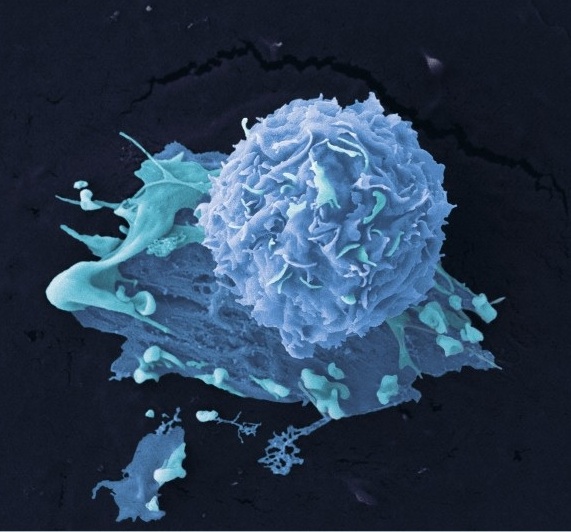Fluorine aids gene silencing
RNA interference (RNAi), a cellular mechanism for regulating gene expression found in nearly all organisms, can be exploited for research and medical purposes. Synthetic double-stranded RNA molecules called short interfering RNAs (siRNAs) are used in such applications to silence gene expression, but the therapeutic potential of siRNAs is limited because the molecules are not “drug-like.”
Martin Egli, Ph.D., and colleagues are investigating how chemical modifications affect the efficacy of siRNAs. In papers published recently in Angewandte Chemie and Nucleic Acids Research, they report on the promising properties of siRNAs modified with fluorine (2’-F siRNAs).
They show that 2’-F siRNAs are more stable and more effective at silencing genes than an unmodified siRNA. In experiments with human white blood cells, the 2’-F-modified siRNA did not stimulate a significant immune response. Using crystal structures of the modified molecules, the researchers also evaluated the biophysical properties of the molecules. The findings suggest that fluorine modification may improve the efficacy of siRNAs for research and medical uses.
— Melissa Marino
Integrin curbs cancer’s spread

Wellcome Images
Much research has focused on β1 integrin alone, but since integrins exist normally as a complex of two distinct units (an α and a β), Mary Zutter, M.D., and colleagues explored the role of α2β1 integrin – a collagen receptor – in cancer initiation and progression. They found that loss of α2β1 integrin markedly increased metastasis in a mouse model of breast cancer and in cell experiments. Their analysis of gene expression data from human breast and prostate cancers revealed that decreased expression of α2 integrin could predict metastatic potential and patient survival.
The results, reported in the Jan. 4 Journal of Clinical Investigation, suggest that α2β1 integrin acts as an important biological brake on tumor metastasis in breast – and possibly prostate – cancers.
— Melissa Marino
Getting left-right asymmetry right
Human beings – like all vertebrates – are asymmetric inside. Organs are on the left or right side of the body, and even the sides of the brain have important physical and functional differences.

iStockphoto.com
Lindsay Marjoram, Ph.D., and Chris Wright, D. Phil., explored the movement of the proteins Nodal and Lefty (Nodal induces Lefty’s expression) in frog embryos. They report in the Feb. 1 issue of Development that Nodal and Lefty move long distances in the embryo along the extracellular matrix (ECM), and that sulfated proteoglycans in the ECM facilitate Nodal movement. They also showed that Lefty can move from the left side of the embryo to the right, an important finding related to its function in preventing Nodal from being improperly expressed on the right side.
— Leigh MacMillan
Protein ‘scissors’ cut path for cancer
Metastatic prostate cancer – cancer that has spread beyond the prostate gland – can be treated, but not cured. To understand how prostate cancer cells degrade tissue barriers to break free of the prostate, Vito Quaranta, M.D., and colleagues, are exploring the actions of a protein called matriptase.

iStockphoto.com
The studies, spearheaded by Manisha Tripathi and Daniel Kirchhofer, Ph.D., showed that matriptase cleaves laminin-332, and that this action affects prostate cancer cell migration. Prostate cancer cells expressing high levels of matriptase migrated faster and in a more directionally persistent manner than cells expressing low levels of the protein. The findings, reported in the Feb. 1 issue of the journal The Prostate, provide new insight into possible mechanisms for matriptase and laminin-332 in cancer progression.
— Leigh MacMillan
We welcome suggestions for research to highlight in Aliquots. The items should be primary research articles (no reviews, editorials or commentaries) published within the last two months in a peer-reviewed journal. Please send the article citation (PDF if available) and any other feedback about the column to: aliquots@vanderbilt.edu.
Past Aliquots
June 22, 2012
June 8, 2012
May 11, 2012
April 27, 2012
April 13, 2012
March 30, 2012
March 16, 2012













